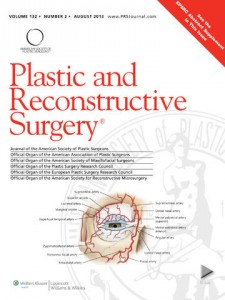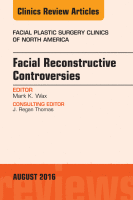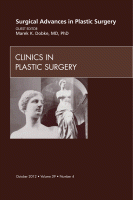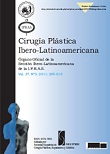Scheuer, Jack F. III et als.
Plastic & Reconstructive Surgery – January 2017 – Volume 139 – Issue 1 – p 50–58

Scheuer, Jack F. III et als.
Plastic & Reconstructive Surgery – January 2017 – Volume 139 – Issue 1 – p 50–58

Publicado: . En: Artículos recomendados. ![]()
Walsh Thomas, W; Bucky, L; Friedman, O.
Facial Plastic Surgery Clinics of North America, 2016-08-01, Volúmen 24, Número 3, Pages 379-389
 Nasal injectables and surface treatments alter the appearance of the nose both primarily and following nasal surgery. Fillers such as hyaluronic acids, calcium hydroxyapatite, and fat have a variety of advantages and disadvantages in eliminating small asymmetries postrhinoplasty. All nasal injectables have rare but severe ocular and cerebral ischemic complications. The injection of steroids following nasal reconstruction has a role in preventing supratip swelling and can improve the appearance of grafts to the nose. Resurfacing techniques reduce the appearance of autotransplanted grafts to the nose; there is little controversy about their benefit but surgeon preference for timing is varied.
Nasal injectables and surface treatments alter the appearance of the nose both primarily and following nasal surgery. Fillers such as hyaluronic acids, calcium hydroxyapatite, and fat have a variety of advantages and disadvantages in eliminating small asymmetries postrhinoplasty. All nasal injectables have rare but severe ocular and cerebral ischemic complications. The injection of steroids following nasal reconstruction has a role in preventing supratip swelling and can improve the appearance of grafts to the nose. Resurfacing techniques reduce the appearance of autotransplanted grafts to the nose; there is little controversy about their benefit but surgeon preference for timing is varied.
Publicado: . En: Artículos recomendados, Propuesta del editor. ![]()
Saba, S. C; Pacella, S. J; Miller, S; Dobke, M. K.
Clinics in Plastic Surgery, 2012-10-01, Volúmen 39, Número 4, Pages 513-520
 Invasive and noninvasive plastic surgical procedures have undergone exponential growth over the last 30 years, due in part to an expansion of extensive basic and clinical research. The purpose of this article is to examine how plastic surgeons learn to use novel technology in their practices. In addition, a critical evaluation of current teaching methods as they relate to surgeon competence in these new technologies is discussed. Mention of specific technologies is done for demonstrative purposes to illustrate how practitioners of plastic surgery gain competence in their safe and effective use.
Invasive and noninvasive plastic surgical procedures have undergone exponential growth over the last 30 years, due in part to an expansion of extensive basic and clinical research. The purpose of this article is to examine how plastic surgeons learn to use novel technology in their practices. In addition, a critical evaluation of current teaching methods as they relate to surgeon competence in these new technologies is discussed. Mention of specific technologies is done for demonstrative purposes to illustrate how practitioners of plastic surgery gain competence in their safe and effective use.
Publicado: . En: Artículos recomendados, Propuesta del editor. ![]()
Coiffman, F.
Cir. plást. iberolatinoam. vol.38, no.1. ene./mar. 2008. pp.1-10
 La necesidad de rellenar arrugas y otras depresiones en la piel ha llevado a la creación de múltiples sustancias inyectables. Los desastrosos resultados producidos por varias de estas sustancias meses o años después de ser inyectados, llevaron al autor a crear el término «alogenosis iatrogénica» y hacer una revisión del tema.
La necesidad de rellenar arrugas y otras depresiones en la piel ha llevado a la creación de múltiples sustancias inyectables. Los desastrosos resultados producidos por varias de estas sustancias meses o años después de ser inyectados, llevaron al autor a crear el término «alogenosis iatrogénica» y hacer una revisión del tema.
Publicado: . En: Artículos recomendados, Propuesta del editor. ![]()
Los lectores comentan